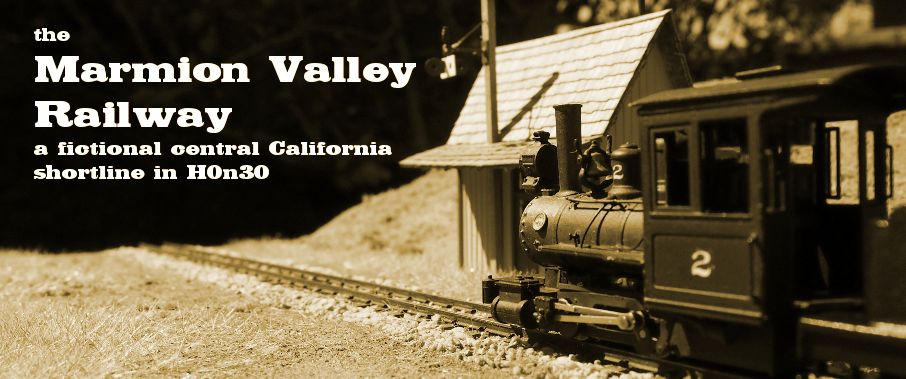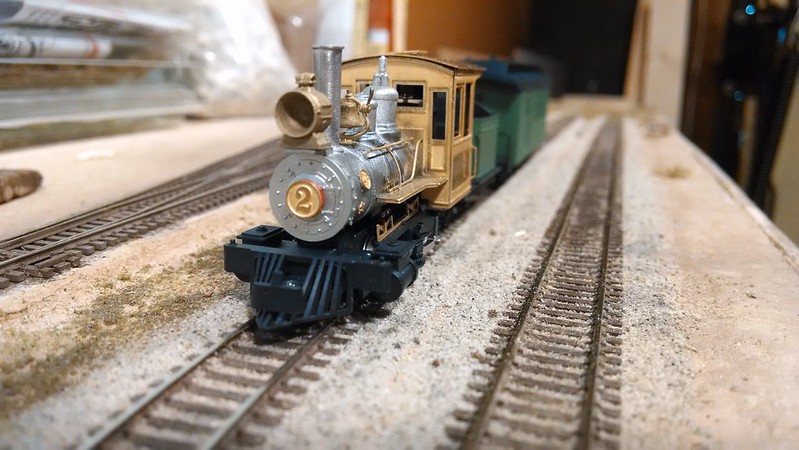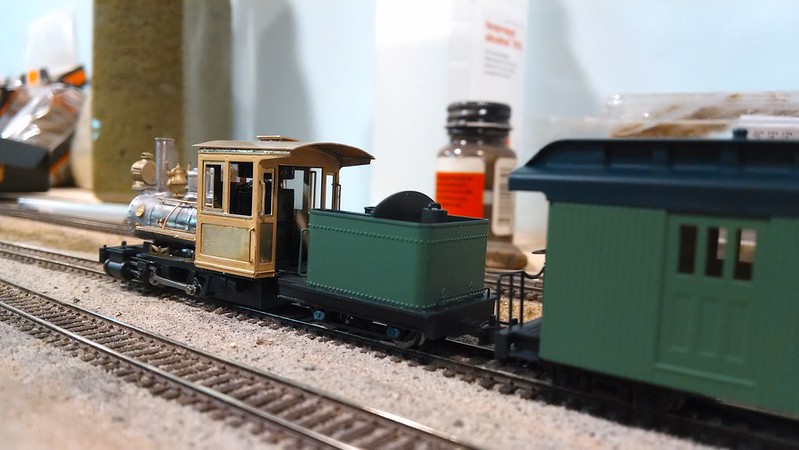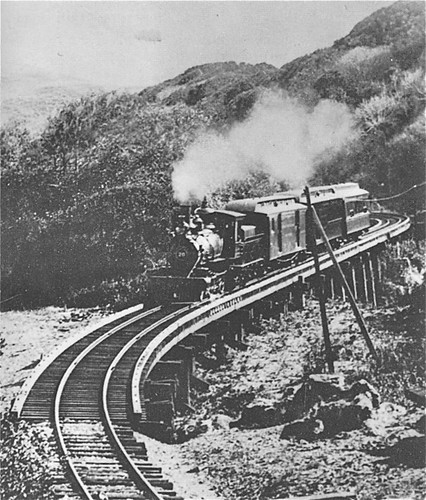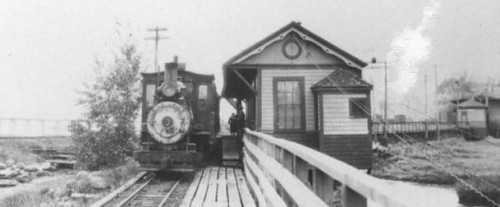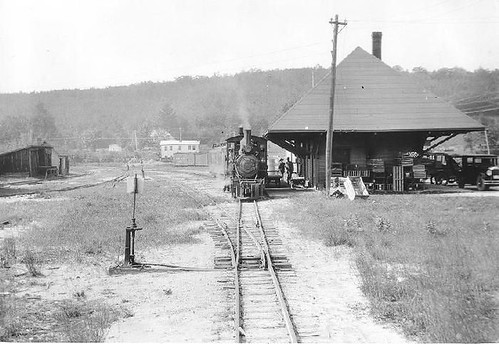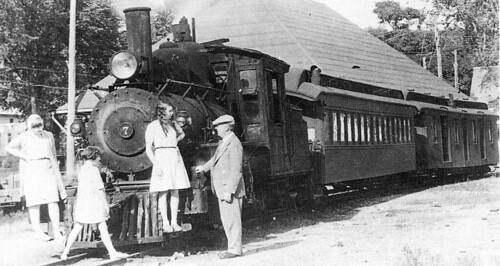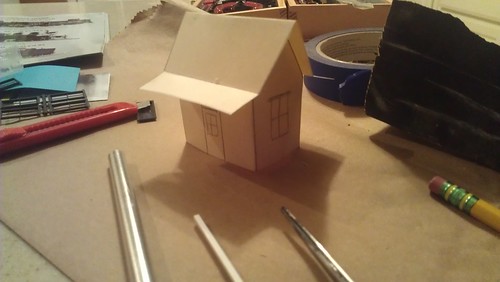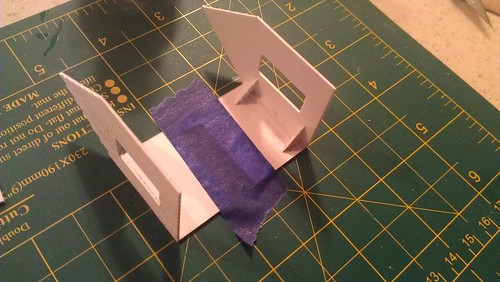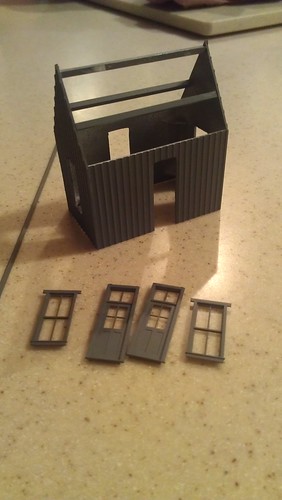Hello world,
I'm pleased to introduce the blog that will chronicle the construction and concepts behind the Marmion Valley Railway, a lifelong N-scaler's first foray to the dark side of HOn30. I hope you enjoy coming along on this little journey of mine.
While I have long had a hidden passion for all things narrow-gauge (probably ignited by a boyhood trip on the Durango and Silverton), I have, for most of my model-railroading life, been a dyed-in-the-wool N scaler at heart.
However, when the itch to start a narrow gauge project railroad started, Nn3 (N scale's little-known and mystery-shrouded narrow-gauge cousin) didn't really seem attractive to me. Appropriate Z scale mechanisms are hard to find (not to mention expensive!), and don't really attain the level of detail I am interested in. I flirted briefly with On30, especially entranced with the unique and good-running equipment Bachmann makes, but the locos and rolling stock I collected lived neglected in their respective boxes for want of adequate space to roam about in.
The middle ground was HO - I think the connection of rail gauge between HOn30 and N attracted me. HOn30 allows for a lot of railroad in smaller spaces with a high level of detail.
When I saw this white metal and brass kit from Toma Model Works, I was sold.
This is the beginning of Marmion Valley engine No. 2. I think it captures just the right flavor of detail, plausibility, and charm for a freelance loco of this type; and it sets the tone for the small-time, out-in-the-sticks, spit-and-bailing-wire operation that the MVRy. will be.
I'm starting small, because space is limited around the homestead right now. This little layout is 2'x4', and officially qualifies as a "Micro Layout" by HO standards.
Eventually, I have plans to expand by creating a series of FreeMo-style modules. For now, this little layout will serve as an experimental platform to introduce myself to the dark-art of narrow gauge modeling.
A Word on the Name
The original "Marmion Valley Ry." was a freelanced N scale standard-gauge layout of about the same size; it didn't really make it much past track laying, though it was operational. "Marmion" was derived from the name of the street our first house was located on; it also means "The Little One" in French, so it seemed the perfect double-meaning moniker for a model railroad.
We are to imagine that the Marmion Valley Ry., in its current incarnation, is a 30" gauge shortline serving a fertile agricultural valley "somewhere" in Central California. While 30" was rare, if not non-existent in the states, the author begs the suspension of disbelief.
